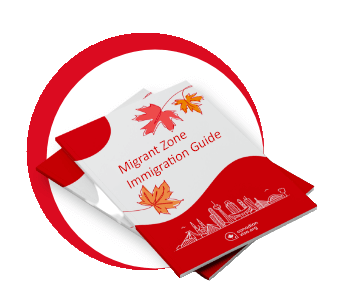
Are you an occupational therapist (OT) seeking new job opportunities in the Great White North? As a highly-skilled and experienced worker, you'll have access to many vacancies and more than 100 immigration and visa programs to help you take your much-valued skills to this land of milk and honey. Let's take a look at all the information you need to immigrate to Canada as an OT.
Work as an Occupational Therapist in Canada

Occupational therapists (National Classification Code 2021 NOC 31203) are healthcare professionals who help aging people, as well as people with physical, developmental, or emotional issues utilizing everyday activities or occupations so that they can carry out daily tasks at work or home.
OTs are also involved with developing and implementing health promotion initiatives with private clients, community groups, and within companies and organizations. You can work in Canada in various healthcare facilities, at schools, for an agency, or in social services. You can also be self-employed.
Duties for OTs in Canada include:
- Analyzing client abilities
- Developing programs to address the needs of clients
- Keep client records updated
- Devise care plans according to each client's needs
- Work as part of a team to successfully treat the client
- Consult and provide information on disability prevention and independent living
- Provide supervision and training for your department's support staff and students
Types of OT Jobs in Canada
As with any other medical occupation, there are several roles within the occupational therapy profession. These include:
- Case manager occupational therapist
- Clinical occupational therapist
- Community occupational therapist
- Occupational therapist (OT)
- Occupational therapy rehabilitation consultant
- Research and development occupational therapist
Is There a Demand for Occupational Therapists in Canada?

With a population of over 38 million, Canada will always have a great need for OTs. Canada's Job Bank predicts a shortage of occupational therapists up until 2031. The site notes that this period will have 9100 new vacancies. These significant shortages are due to significant growth in the medical sector and earlier retirement being promoted.
Here are the projections for Occupational Therapist vacancies for the next three years, according to Job Bank:
- Alberta - Good
- British Columbia - Good
- Manitoba - Good
- New Brunswick - Good
- Newfoundland and Labrador - Moderate
- Northwest Territories - Undetermined
- Nova Scotia - Good
- Nunavut - Undetermined
- Ontario - Good
- Prince Edward Island - Undetermined
- Quebec - Good
- Saskatchewan - Good
- Yukon Territory - Undetermined
How Much Does an Occupational Therapist Make in Canada?

If you take the leap to work in Canada as an occupational therapist, you can expect to earn quite an attractive salary. According to Talent.com, the average Canadian OT salary in Canada is around $79,833 per year or just over $40 per hour. An OT just starting can earn around $72,404 annually, while a highly experienced one can earn as much as $114,100 annually.
| Average Annual Salaries for Occupational Therapists in Canada | ||
|---|---|---|
| Occupation | Estimated Maximum Salary Per Year Per Region (CAD) | |
| Alberta | $96,818 | |
| British Columbia | $79,833 | |
| Manitoba | $69,000 | |
| New Brunswick | $75,075 | |
| Newfoundland & Labrador | $83,519 | |
| Northwest Territories | $104,208 | |
| Nunavut | $99,743 | |
| Nova Scotia | $70,273 | |
| Ontario | $81,704 | |
| Prince Edward Island | $73,915 | |
| Quebec | $74,159 | |
| Saskatchewan | $88,110 | |
| Yukon | $83,761 | |
Unlock Your Ideal Canadian Immigration Option

Applying for occupational therapist jobs in Canada, let alone tackling the Canadian immigration process on your own, can be an overwhelming task, but we've highlighted four essential steps to take when starting the visa application process.
Step 1: Choose your Destination
Deciding where you would like to live and work in Canada is crucial because this may assist you in narrowing down your visa or immigration program choices. Although there may be more high-paying job opportunities in a particular province or territory, it may not be affordable, and the lifestyle may not be what you are looking for. So before you start applying for jobs in Canada, research your chosen province or territory and ensure that it is the right fit for you and your loved ones. You may want to start by finding out where occupational therapists are in demand here.
Step 2: Get Registered and Assessed
To live and work in Canada as an occupational therapist with a foreign qualification, you must first check if your qualification is recognized here. You can check this on the World Directory of Medical Schools. If recognized, you will need an Educational Credential Assessment (ECA). Below is a list of officially designated organizations that can do your assessment:
- Comparative Education Service - University of Toronto School of Continuing Studies;
- International Credential Assessment Service of Canada;
- World Education Services;
- International Qualifications Assessment Service (IQAS); and
- International Credential Evaluation Service.
Please note that some provinces require you to register with a Canadian Association of Occupational Therapists once you arrive in Canada. It is best to check the application procedures and fees with the provincial or territorial government you are planning to move to.
Step 3: Apply For a Job in Canada
Although this is not compulsory for all immigration programs and visas and is not a prerequisite for Express Entry, we highly recommend finding employment before you immigrate to Canada. This will not only improve your chances of getting an Invitation to Apply (ITA) for Canadian Permanent Residency but also alleviate a lot of the stress associated with searching for a job in a new country. After all, you'll most certainly have your hands full with other things when you first arrive in Canada, such as finding accommodation, opening a bank account, finding a cell phone and internet provider, and so on.
Step 4: Choose Your Immigration Program and Start the Application Process
There are various ways to immigrate to Canada as an occupational therapist, but we've listed the top two ways that will give you the highest chances of success - the Express Entry System and the Provincial Nominee Program.
The Express Entry (EE) system is a points-based system that manages 3 Canadian federal economic immigration programs:
- The Federal Skilled Worker Program (FSWP)
- The Federal Trade Worker Program (FSTP)
- The Canada Experience Class (CEC)
As a highly-skilled professional, you would qualify to apply through the FSWP or the CEC (if you have at least one year of Canadian work experience). Your EE application will be entered into draws, which usually occur every two weeks, and ranked against other applicants according to the Comprehensive Ranking System (CRS). Use our CRS calculator tool to find out your score.
Applicants with the highest scores will receive an ITA for permanent residence. The Express Entry system is one of the most popular ways to immigrate to Canada as it does not require a job offer in Canada, allowing you to work anywhere. The application process can take as little as six months.
The Provincial Nominee Program allows you to live and work in Canada if your occupation meets the labour demands of that particular province or territory. Each province/territory has its own PNP with specific in-demand occupations and if you receive a provincial nomination, which is worth 600 extra points you are basically guaranteed to receive an ITA for Canadian permanent residence. As mentioned previously, almost every PNP has a stream linked to the Express Entry system, which will speed up your application process from approximately 18 months if you apply directly to the province to six months when you apply through Express Entry.
Below is a list of PNP streams or categories, in each province or territory, for occupational therapists who want to immigrate to Canada.
| Canadian PNP Immigration for Occupational Therapists | ||
|---|---|---|
| Province/Territory | Immigration Stream/Category | |
| British Columbia | Healthcare Professional Category Express Entry Skilled Worker Category | |
| Manitoba | Skilled Workers Overseas Stream | |
| Saskatchewan | International Skilled Worker: Occupation In-demand Category International Skilled Worker: Saskatchewan Express Entry stream | |
Take Your OT Skills to Canada

Now that you know how valuable your skills are in the Great White North, it's time to make your way here. With over 100 pathways allowing you to live and work in Canada, all you need to do is commit to starting your Canadian immigration process today.
You may find the Canadian Immigration process quite time-consuming and confusing. With strict deadlines, procedures, and requirements to adhere to, it can be easy to make a mistake that could cost you your chance to immigrate to Canada as an Occupational Therapist. But with the guidance and assistance of one of our knowledgeable Regulated Canadian Immigration Consultants (RCICs), the process will be stress-free.
FAQS
At What Stage Will I Need an ECA?
An ECA is an important requirement for some Canadian immigration programs. It may be required very early in the immigration process, especially in a program like the Federal Skilled Worker Program.
I'd Like to Work as an Occupational Therapist in Quebec. Is this Province part of the Provincial Nominee program?
No. Quebec has its own programs and requirements.




